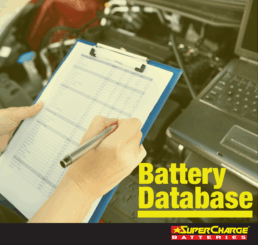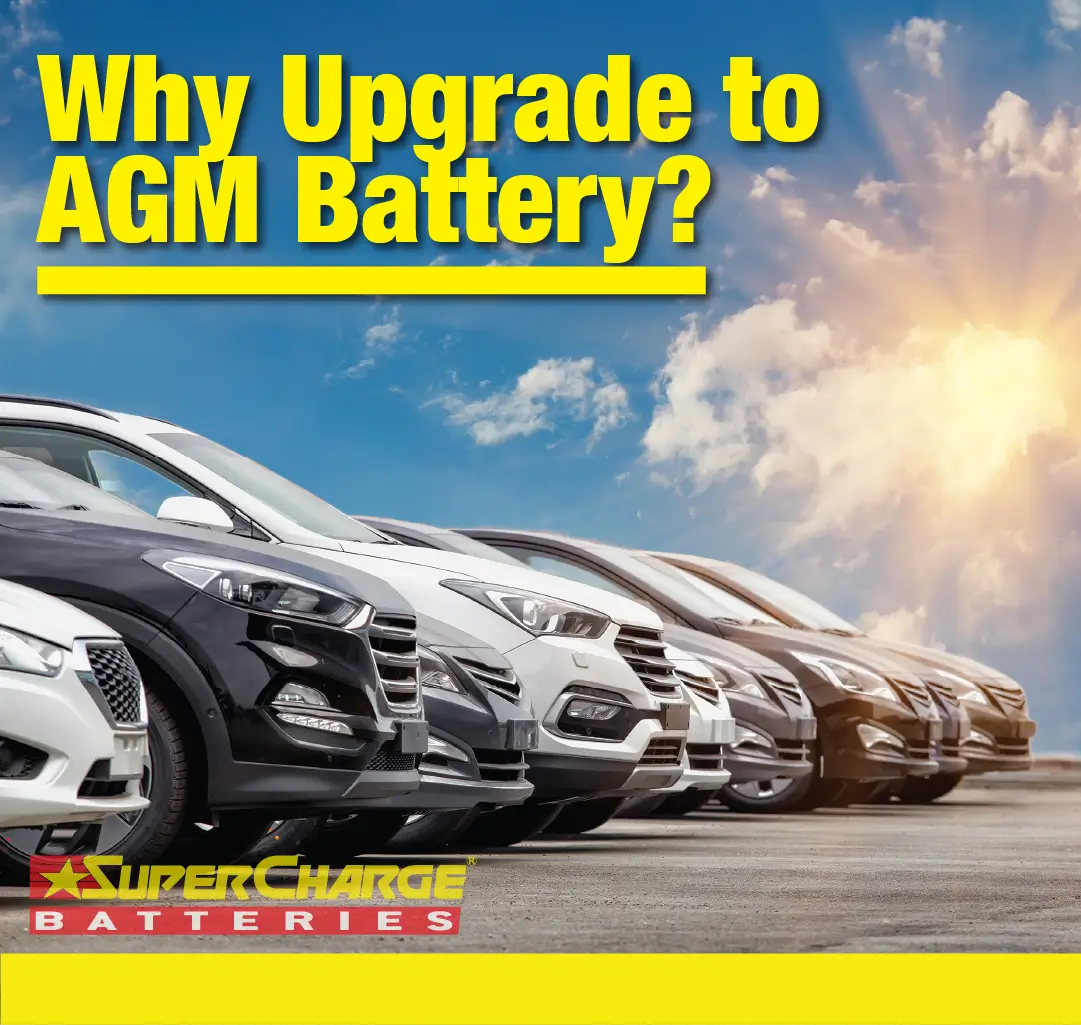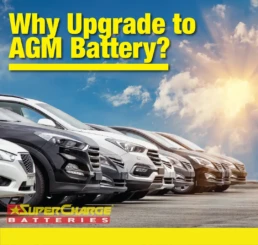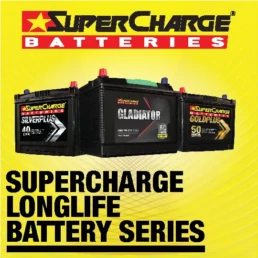Supercharge Your Search: How to Use the Supercharge Battery Database
Supercharge Your Search: How to Use the Supercharge Battery Database

If you’re looking for the perfect battery for your vehicle or equipment, the Supercharge Battery Database is your go-to tool. With a clean interface and powerful filters, it makes finding the right battery simple and fast.
Exploring the Comprehensive Battery Database
To get started click on the Database icon on the header menu. At the top, you’ll see a search bar where you can enter a battery type, model, or keyword. This is ideal if you already know what you’re looking for. Below that, the filter panel lets you narrow down results by category, size, voltage, CCA (Cold Cranking Amps), RC (Reserve Capacity), AH (Amp Hours), and physical dimensions like length, width, and height.
For example, if you need a 12V battery with at least 750 CCA for a 4WD, you can set those parameters and instantly see matching products. Each battery listing includes detailed specs and a downloadable datasheet for deeper insights.
The database covers a wide range of categories including Automotive, Marine, 4WD/SUV, Industrial, Motorcycle, Lawn Mower, Deep Cycle, AGM, Gel, and Lithium batteries. This tool helps you make informed decisions.
Once you find the right battery, you can note the model number and head to a Supercharge dealer or contact them directly for availability. It’s a streamlined experience designed for mechanics, fleet managers, and everyday drivers alike.
Tip: Bookmark the page for quick access next time you need battery specs. With everything consolidated into one sheet, Supercharge puts the power of choice right at your fingertips.
Upgrading Your Lead-Acid Car Battery to AGM: Tips for a Smooth Switch
Upgrading to an AGM Car Battery – Benefits: Tips for a Smooth Switch
If your car’s battery is due for replacement, upgrading from a traditional flooded lead-acid battery to an Absorbent Glass Mat (AGM) battery can be a smart move. AGM technology offers better performance, longer lifespan, and improved reliability — especially if you run extra electrical accessories or want a battery that’s built to handle tougher conditions.

Upgrading to an AGM Car Battery is a critical choice for enhancing your vehicle’s capabilities.
AGM batteries utilize a unique design that includes absorbent glass mats, which help to hold the electrolyte in place, making them spill-proof and ideal for installation in virtually any position. This feature is particularly beneficial for off-road vehicles or those that experience a lot of vibrations. The ability to mount the battery in various orientations can also facilitate more flexible design in battery compartments.
Upgrading to an AGM Car Battery – Benefits include enhanced performance, longevity, and reliability, making it ideal for vehicles with additional electrical demands.
When considering Upgrading to an AGM Car Battery, you’ll notice significant improvements in performance.
Here’s what you need to know before making the switch.
Why Consider AGM?
-
- Longer Life – AGM batteries are more resistant to vibration and shocks which is important in off-road, marine and other applications. AGM batteries also have a very low self-discharge.
- Sealed and Spiff-Proof Design – maintenance-free – no need to check or top off water, no acid spills
- Faster Charging – Lower internal resistance means quicker and more efficient recharge times.
- Better Performance in Extreme Temperatures – Functions effectively in both warm and cold weather with a wider operating range.
- More Power for Accessories – Perfect for cars with upgraded sound systems, dash cams, fridges, and other gear.
Moreover, AGM batteries are increasingly being used in high-performance applications. This includes vehicles equipped with advanced audio systems, electric winches, or other high-drain devices. For example, if you enjoy camping and use a portable fridge, an AGM battery can efficiently manage the power needs of multiple accessories without risking power depletion.
Upgrading to an AGM Car Battery allows for more efficient power management in your high-performance applications.
AGM Upgrade Tips
Additionally, transitioning to an AGM battery can significantly reduce the risk of battery-related issues. With conventional batteries, the risk of spills and leaks can lead to corrosion and damage to the vehicle’s components. The sealed design of AGM batteries mitigates this risk, providing peace of mind to drivers concerned about potential maintenance issues. This aspect is particularly vital for classic cars, where preserving the integrity of the engine bay is crucial.
For many drivers, Upgrading to an AGM Car Battery simplifies maintenance concerns.
1. Check Charging System Compatibility
AGM batteries require precise voltage regulation. It prefers a slightly lower charging voltage range than flooded traditional batteries~ 14.4V. Ensure that your alternator and voltage regulator are in good health. In older cars, consider upgrading to a charger that supports AGM mode. Overcharging AGM batteries will shorten battery life .
2. Match the Size & Specs
It’s essential to ensure compatibility when Upgrading to an AGM Car Battery.
Use the correct battery group size for your vehicle. Check Cold Cranking Amps (CCA) and Reserve Capacity (RC)— your new AGM should meet or exceed your car’s original specifications.
3. Clean the Battery Connections
Corroded or dirty terminals can waste AGM’s performance benefits. Clean with a baking soda and water mix, then apply dielectric grease to prevent future corrosion.
4. Update Battery Management Settings
If your car has a Battery Management System (BMS), it may need to be reset or coded for AGM chemistry to ensure proper charging.
It’s essential to note that AGM batteries can require different maintenance practices than traditional batteries. Users should familiarize themselves with specific care instructions for AGM batteries. For instance, while they are marketed as maintenance-free, periodic checks to ensure that the charging system remains compatible can prevent long-term issues. Awareness and understanding of these differences will help maintain optimal performance.
Understanding the nuances of Upgrading to an AGM Car Battery can optimize your driving experience.
5. Avoid Deep Discharges
While AGM handles deep cycling better than standard batteries, keeping the charge above 50% will extend its life. If your car sits for long periods, use a quality AGM-compatible battery maintainer.
Take care of your AGM battery by following best practices before and after Upgrading to an AGM Car Battery.
6. Choose the Right Charger
Use smart chargers with AGM setting. If using normal chargers, constant voltage charging is recommended. You may refer to Supercharge’s recommended charge settings for AGM batteries.
7. Protect from Excessive Heat
High temperatures can shorten any battery’s lifespan. Check the engine bay/ battery compartment. It is best to use proper heat shielding/ventilation or insulation when in a high–heat / high-temperature compartment.
Prolonged exposure to high temperatures can dry out the electrolyte and shorten battery life.
Conclusion
In summary, the transition to an AGM battery represents a significant upgrade for many vehicle owners. Not only do they offer enhanced durability and performance, but they also provide additional safety features and greater flexibility in mounting options. This upgrade is particularly relevant for those who depend heavily on their vehicle’s electrical systems.
AGM batteries are excellent in cold, rugged, and vibration-prone environments, and good in heat when properly managed
By choosing the right AGM battery and adhering to the recommended care practices, drivers can enjoy a reliable power source for years to come.
In conclusion, Upgrading to an AGM Car Battery – is a wise decision for those seeking improved durability, power, and reliability in their vehicles. With their superior design and capability to handle demanding electrical loads, AGM batteries can provide an exceptional alternative to standard lead-acid batteries. Proper installation and maintenance practices will ensure your AGM battery serves you well, making it a worthy investment for enhancing your vehicle’s performance.
Autumn Season 8 Camping Power Tips
Autumn Season 8 Camping Power Tips
Summer season is nearing. Are you ready to go off-grid this camping season? Here are some tips from Supercharge to give you more power in your camping adventure.

Calculating your camping battery power needs can be tricky, but following a few simple steps can make it a lot easier:
- It would be best to list all the electrical devices you plan to use during your camping trip, such as lights, fans, heaters, chargers, and portable fridges.
- You should determine the power requirements for each device in watts. If this information is unavailable, you can calculate it using Watts = Volts x Amps.
- Estimate the hours you'll use each device daily and multiply the power requirement by the usage time to calculate daily power consumption in watt-hours (Wh). Remember that no battery system is 100% efficient, so you should account for efficiency loss by multiplying your total daily power consumption by 1.2. Choose a battery with a capacity large enough to meet your needs, measured in amp-hours (Ah) or watt-hours (Wh), and avoid draining it entirely for the battery's health.
- If you plan to recharge your battery using solar panels, factor in the amount of sunlight you expect each day and the efficiency of the solar panels, and ensure proper maintenance and safety precautions for your battery system.
- After determining your total daily power consumption, the next step is to select a battery with sufficient capacity to meet your needs. Battery capacity is measured in amp-hours (Ah) or watt-hours (Wh). It is essential to choose a battery with a large enough capacity to supply your total daily power consumption without draining it completely. You should avoid fully discharging the battery for its longevity.
- Suppose you are planning to recharge your battery using solar panels. In that case, it is crucial to consider the amount of sunlight you expect each day and the efficiency of the solar panels. These two factors will determine how quickly you can recharge your battery. Additionally, consider the possibility of cloudy days, which can affect the charging capacity of the solar panels. Therefore, you may need extra capacity to ensure your battery is fully charged even on cloudy days.
- Make sure to properly maintain and handle your battery system, including correct charging procedures and storage, to ensure safety.

These steps will help you accurately determine your camping battery power needs and
ensure you have a reliable power source for your outdoor adventures.
SuperCharge Batteries has a wide range of deep-cycle batteries that suit your needs. We have you covered with lead acid, AGM, and lithium deep-cycle batteries. We also have our new portable power pack SPB1500, a convenient and easy-to-use power source you can bring anywhere.
Check our full range at the adventure application tab.
SuperCharge Long Life Battery Series
SUPERCHARGE LONG LIFE BATTERY SERIES
As an expression of the long-life design, customers will have the best warranties across all product tiers, and in fact, with the new SuperCharge Gold and Gladiator lines, ground-breaking offers to customers who value high quality and product life above all else.
For too long now, starting battery quality has been mistakenly equated with just cranking capability (CCAs). That is true only to the point where EXCESS cranking comes at the expense of shorter service life. In a nutshell, we don’t really need batteries that can start vehicles in Iceland, but rather those that can last a long time in our environments in Australia.
All our new products meet and EXCEED international starting battery standards. More importantly, rigorous tests for the new designs ensure that cycle lives surpass competitors through the product tiers and, at the high end, generate in excess of 100% more cycles.
While certain features of the re-design are proprietary, it is a combination of the following general battery elements working in harmony to maximize life cycles:
- Hardened Grids using alloys and frame designs that will resist grid growth over time
- Long-term battery cooling designed for the Australian summer
- Dense and compact plate construction
- Cushioning material and robust connections to withstand punishment from vibrations
- Formulations and battery assembly design that encourage high-efficiency electrical transmission through the discharge and charge cycles and ensure maintenance of higher state of charge
- High purity contaminant-free materials produced by our own lead manufacturing plants
- Formulations that provide long-term deterrence to sulphate crystal formation
- High purity contaminant-free acid solutions are also produced by our own acid plant
With all these battery innovations, SuperCharge Batteries provides the longest battery service life backed with the industry’s leading warranty.




